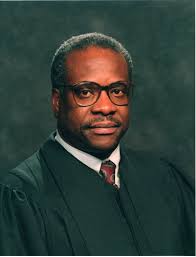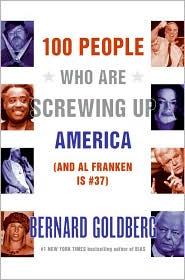
You tend not to hear that much about the Justices on the Supreme Court. They tend to keep a low profile, although they do from time to time make public appearances.
Justice Clarence Thomas recently took questions from a group of high school students who were winners in an essay contest about the Bill of Rights.
A little background about Justice Thomas. He is the lone African-American on the Court. (As you know, there is also one woman. The rest are white males.) He is quite conservative. (Among other things, he is opposed to affirmative action programs.) His nomination was quite contentious: Thomas himself called it "a high-tech lynching." (He was accused of sexually harassing a female clerk.)
Now the
New York Times, where this article occurs, calls it a "sidebar". Normally, in journalism, a sidebar is a short article supporting a longer one -- information about a person involved in a story, say. But in this case, there is no other story. (In law, a sidebar is a conversation between judge and lawyers outside of the hearing of the jury.) So what is it here? Well, it's not straight news, and it's not quite a column (where opinions are acceptable).
Let's take a look.
Justice Clarence Thomas has not asked a question from the Supreme Court bench since Feb. 22, 2006. He speaks only to announce his majority opinions, reading summaries in a gruff monotone. Glimpses of Justice Thomas in less formal settings are rare.
That's how it starts. It's true that, unlike the other justices, Thomas doesn't get involved when cases are argued before the Court. But it strikes me as something of a dig.
Thomas went on to mention some of the things that are important to him.
“Sometimes, when I get a little down,” Justice Thomas said wearily, he goes online. “I look up wonderful speeches, like speeches by Douglas MacArthur, to hear him give without a note that speech at West Point — ‘duty, honor, country.’ How can you not hear those words and not feel strongly about what we have?” He continued: “Or how can you not reminisce about a childhood where you began each day with the Pledge of Allegiance as little kids lined up in the schoolyard and then marched in two by two with a flag and a crucifix in each classroom?”
Hmmm. Separation of church and state? That's a big, contentious issue.
As for the Bill of Rights. Well, rights are okay, I guess, as far as they go.
“Today there is much focus on our rights,” Justice Thomas said. “Indeed, I think there is a proliferation of rights.” “I am often surprised by the virtual nobility that seems to be accorded those with grievances,” he said. “Shouldn’t there at least be equal time for our Bill of Obligations and our Bill of Responsibilities?” He gave examples: “It seems that many have come to think that each of us is owed prosperity and a certain standard of living. They’re owed air-conditioning, cars, telephones, televisions.”
I agree. We Americans don't always own up to our responsibilities, and we probably regard things as our "rights" which really aren't. But Thomas doesn't always always seem too thrilled by some of those basic right in the Bill of Rights. That's not mentioned directly in the article, but if you know Thomas's record, it's certainly looming in the background.





